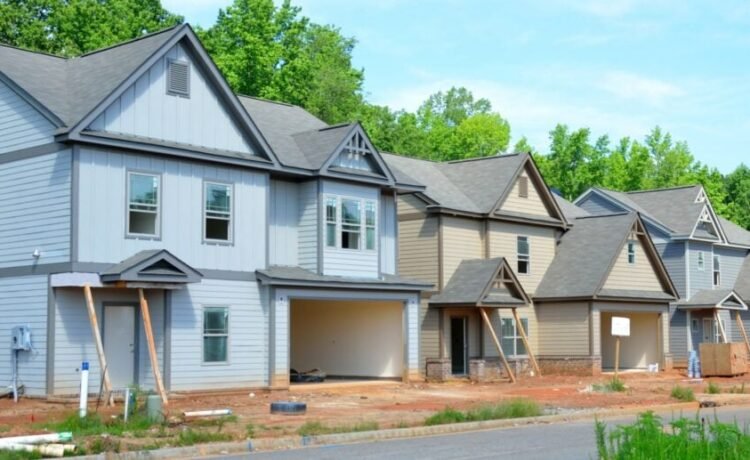We’re in a Home Construction Golden Age—Here’s How Investors Would Benefit From Building

This article is presented by Connect Invest. Read our editorial guidelines for more information.
It would be an understatement to say the COVID-19 pandemic ushered in an era of economic turmoil, presenting challenges across various sectors. Real estate debt investors, known for their gradual wealth accumulation, still experienced favorable returns on their investments amidst the pandemic. However, investors encountered a scarcity of opportunities.
Buyers experiencing low housing inventory and intense competition, as well as investors navigating uncertainty in the economy, weren’t the only ones coping with the obstacles brought by the pandemic. The homebuilding industry grappled with disruptions in the supply chain, labor shortages, escalating construction material costs, high interest rates, and government regulations, posing significant hurdles to new construction projects.
According to a June 2020 poll conducted by the Associated General Contractors of America, 68% of contractors had seen a project canceled as a result of the COVID-19 pandemic; 48% saw a project that had begun before the pandemic halted.
Emerging from the pandemic, there remains a persistent demand for new construction to ease the stress of unaffordability for most buyers. While homebuilding rates continue to stall, or even slightly tumble, both buyers and investors are left pondering: When will new construction reach levels that start to alleviate market pressures?
Facing the Escalating Housing Shortage
Low inventory and high interest rates are the dominant forces shaping the real estate landscape over the past three years. The scarcity of available homes triggered a chain reaction, propelling prices to unprecedented heights.
Despite this, prospective homebuyers continued their search, even as affordability became increasingly out of reach for the average buyer. The resulting relentless competition continues to persist, driven by the stark reality of inadequate housing supply.
According to Realtor.com, between 2012 and 2023, the disparity between single-family home construction and household formations widened to a whopping 7.2 million homes. Including multifamily construction, such as apartments and townhomes, brings the gap down to 2.5 million homes, still a dramatic figure.
Household formations refer to the change in the number of households from one year to the next, helping determine demand for new housing. For example, a person who moves out of their parents’ house and signs their own lease is an example of a household formation.
It would be historically inaccurate to attribute the current housing crisis solely to the COVID-19 pandemic and the ramifications that followed. While COVID-19 exacerbated many issues, the roots of the many problems stretch back further. As a result of the 2009 housing crash, the United States experienced over a decade of under-building relative to population growth.
It took over 11 years, until 2020, for the industry to fully recover. And just as housing construction found its footing and was back on pace to pre-2009 rates, the pandemic struck, disrupting progress.
As we move past the pandemic, the housing market will undergo a recovery, albeit gradual, and may face further challenges before improvement becomes evident.
Facing the New Reality of the Real Estate Market
The concept of the “new normal” has permeated various sectors during the past four years, including dramatically affecting the real estate market. Surprisingly, only 25% of prospective buyers, as of the second quarter of 2023, were inquiring about new construction homes nearby.
According to the National Association of Realtors (NAR), a quarter of buyers expressed a preference for new construction, yet only 13% ultimately purchased a new home, with 87% opting for existing ones.
While there is a gradual shift toward buying new homes, this trend is more a response to current market conditions than a reflection of preferences. The prevalence of new construction purchases is largely dictated by the substantial disparity in supply levels, with an 8.3-month supply of new homes compared to just a three-month supply of existing ones, as of March 2024. For buyers and investors, new house construction has become the practical choice.
Despite soaring prices and interest rates, demand for homes remains robust, prompting buyers to jump through hoops and hurdles in attempts to become a homeowner, and in turn, increasing the competition even further.
As supply chain issues resolve, supply costs decrease to pre-pandemic levels, and labor shortages abate, new home construction is poised to accelerate. This development is particularly encouraging for real estate investors.
Why Investing in New Construction Is a Wise Idea
The truth is, only new home construction can meet the current (and growing) demand; there’s no way around it. According to NAR projections, new home sales are expected to climb by 13.9% in 2024, up from 12.3% in 2023.
However, even if the existing home inventory increases, it still won’t be enough to bridge the supply-demand gap. Significant reductions in interest rates would be necessary to stimulate this market, as existing homeowners are reluctant to sell and forfeit their low pre-2022 mortgage rates—a decision that’s entirely understandable.
Observing major investors like Berkshire Hathaway, led by CEO Warren Buffett, which recently acquired substantial stakes in prominent real estate firms such as D.R. Horton, Lennar, and DVR, provides a promising indication of the future for the construction industry. In total, the multinational conglomerate holding company purchased over $800 million worth of stakes in the prominent real estate firms last year.
Even Howard Hughes CEO David O’Reilly has dubbed 2024 “the golden age” for homebuilding. When asked to clarify his thoughts, O’Reilly simply stated: “We have demand that’s meaningfully outpacing supply,” mentioning the countless buyers in the market desperate to purchase a home.
This strong demand, coupled with limited existing homes for sale, and developers offering mortgage rate buy-downs on new builds, has created an ideal environment for homebuilders that recognize their high demand. Howard Hughes’ confidence in new construction is evident in its involvement in projects like the brand-new, 37,000-acre community in Buckeye, Arizona, named Teravalis, scheduled to open in 2025, along with numerous other single-family and multifamily developments nationwide.
How to Invest in New Construction
The great news is that you don’t need the immense capital anywhere near that of Howard Hughes or Berkshire Hathaway to invest in new homebuilding. In the digital age, the ascent of fintech and alternative investment platforms has made investing in real estate construction accessible to individuals from diverse backgrounds, whether accredited or unaccredited. This democratization of private real estate investing has opened numerous doors for new investors seeking passive income.
Traditionally, investing in new homebuilding required substantial capital, extensive industry connections, meticulous market and builder research, securing financing, monitoring developments, and navigating tons of paperwork, often without clear, defined exit dates. However, alternative investment platforms have streamlined much of this process, handling the bulk of the manual work on behalf of investors and simplifying the investment journey significantly.
Final Thoughts
Demand for new construction remains robust, driven by a persistent housing shortage and increasing buyer competition. As the market slowly recovers, there is optimism that resolving supply chain issues and easing labor shortages will accelerate new home construction. This presents a promising opportunity for real estate investors, especially as alternative investment platforms democratize access to this sector.
Connect Invest’s Short Note Portfolio model allows investors to easily reap the benefits from the new construction projected to rise this year. Start growing your wealth today!
This article is presented by Connect Invest

Your connection to private real estate investing.
Connect Invest is an online investing platform that provides opportunities for short-term investments. These investments contribute to a diverse portfolio of real estate projects, encompassing both commercial and residential developments at various stages.
Note By BiggerPockets: These are opinions written by the author and do not necessarily represent the opinions of BiggerPockets.









